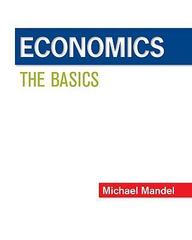Question
Brenda wants to buy a new car and has a budget of $24,000. She has just found a magazine that assigns each car an index
Brenda wants to buy a new car and has a budget of $24,000. She has just found a magazine that assigns each car an index for styling and an index for gas mileage. Each index runs from 0 to 12, with 12 representing either the most styling or the best gas mileage. While looking at the list of cars, Brenda observes that on average, as the style index increases by one unit, the price of the car increases by $2,000. She also observes that as the gas-mileage index rises by one unit, the price of the car increases by $4,000.
(a) Illustrate (for yourself) the various combinations of gas mileage (G) and style (S) that Brenda could select with her $24,000 budget. Place gas mileage on the horizontal axis.
- Her budget line is given by 4,000*G + [ Select ] ["2,000", "4,000", "24,000"] *S= [ Select ] ["2,000", "4,000", "24,000"]
- The X-intercept of her budget line is equal to [ Select ] ["2", "3", "4", "5", "6", "8", "10", "12"]
- The Y-intercept of her budget line is equal to [ Select ] ["2", "3", "4", "5", "6", "8", "10", "12"]
(b) Brenda likes both styling and mileage equally and wants to have a car with the same index for styling as for gas mileage. How do her indifference curves look like? What type of car will Brenda choose?
- Brenda's indifference curves are [ Select ] ["L-shaped", "horizontal straight lines", "vertical straight lines", "downward sloping straight lines", "downward sloping strictly convex curves"]
- Brenda will choose a car with G = [ Select ] ["1", "2", "3", "4", "5", "6", "8", "10", "12", "0"] units of mileage and S = [ Select ] ["1", "2", "3", "4", "5", "6", "8", "10", "12", "0"] units of styling.
(c) Ryan also wants to spend $24,000 to buy a new car, but he does not care at all about styling and wants the best gas mileage possible. How do his indifference curves look like? What type of car will Ryan choose?
- Ryan's indifference curves are [ Select ] ["L-shaped", "horizontal straight lines", "vertical straight lines", "downward sloping straight lines", "downward sloping strictly convex curves"]
- Ryan will choose a car with G = [ Select ] ["0", "1", "2", "3", "4", "5", "6", "8", "10", "12"] units of mileage and S = [ Select ] ["0", "1", "2", "3", "4", "5", "6", "8", "10", "12"] units of styling.
(d) How will Brenda's and Ryan's choices change if car prices increase by $2,000 per unit of gas-mileage index (instead of $4,000)?
- Brenda will choose a car with G = [ Select ] ["0", "1", "2", "3", "4", "5", "6", "8", "10", "12"] units of mileage and S = [ Select ] ["0", "1", "2", "3", "4", "5", "6", "8", "10", "12"] units of styling.
- Ryan will choose a car with G = [ Select ] ["0", "1", "2", "3", "4", "5", "6", "8", "10", "12"] units of mileage and S = [ Select ] ["0", "1", "2", "3", "4", "5", "6", "8", "10", "12"] units of styling.
Step by Step Solution
There are 3 Steps involved in it
Step: 1

Get Instant Access to Expert-Tailored Solutions
See step-by-step solutions with expert insights and AI powered tools for academic success
Step: 2

Step: 3

Ace Your Homework with AI
Get the answers you need in no time with our AI-driven, step-by-step assistance
Get Started


